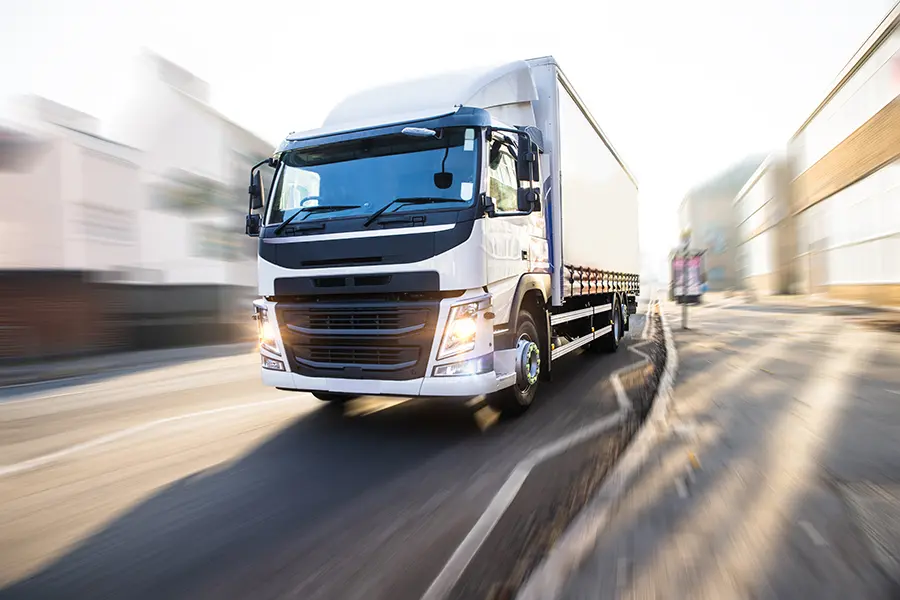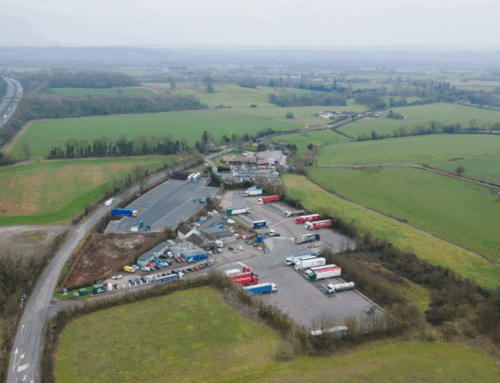Vehicle maintenance = driver safety
Proper vehicle maintenance is a key part of ensuring driver safety. We spoke to DVSA’s Enforcement Policy Manager, David Wood, to learn why. We will also explore how DVSA’s earned recognition scheme can support operators in achieving vehicle and driver safety standards.
Proactive vehicle maintenance is essential to road safety for both your own drivers and other road users. The heavier and larger a vehicle, the greater a potential hazard it poses when travelling at speed. Vehicles experience wear, heat and friction as they are used, and so they need to be regularly inspected and maintained in order to ensure that parts do not fail on the road. Your organisation’s Driving for Work Policy is the ideal place to document your specific policies on vehicle maintenance and inspection.
HGV Vehicle Inspections
If HGVs are not inspected frequently and maintained adequately, they can develop defects very fast. A recent DVSA data analysis showed that vehicles received ten times as many prohibitions three months after their annual test as they did one month post-test.
Fleet operators have a legal duty to keep vehicles roadworthy. The Road Vehicles (Construction and Use) Regulations 1986 lays out the necessary planned and preventive maintenance, as does an HGV or PSV operator’s undertakings to the Traffic Commissioner in order to fulfil the terms of their operator’s licence.
The Driver and Vehicle Standards Agency (DVSA) has an online guide to vehicle maintenance, which is the industry agreed standard for vehicle maintenance. Operators will also find useful information in the Maintenance Investigation Visit Report (MIVR) assessment guidance. David Wood, an Enforcement Policy Manager at DVSA, suggests operators “might consider working through a self-audit against the MIVR guidance”.
Ideally, says David, all vehicles should be systematically checked before use, inspected as frequently as suggested in the table below, and have planned maintenance schedules. This helps to ensure that vehicles are roadworthy throughout the year, not just at the time of the MOT test.
Failure to maintain vehicles properly can result in a high first-time failure rate at test, which is a red flag for Traffic Commissioners, and can result in a public inquiry.
Daily vehicle walk round checks
“During DVSA roadside inspections, more than 60% of HGV prohibitions relate to defects which could have been identified and reported by the driver during their walkaround check or identified while using the vehicle,” says David.
“The operator should then have fixed those defects. Drivers may not be completing thorough vehicle checks, ignoring defects or dashboard warnings, or their employers are not acting upon their findings. Some of this may come down to poor training for drivers and transport managers too.”
HGVs can develop defects relatively quickly, which is why regular scheduled inspections are so important.
Within the first 6 months of passing an MOT, HGVs inspected by DVSA receive prohibitions for serious failings such as illegal, cut and worn tyres, defective suspension, faulty steering, and ineffective brakes. These are all issues that can affect the driver’s control of the vehicle.
The top 10 defects are listed here.
Tyre defects – 50,000 breakdowns a year
National Highways data shows that 20% of all breakdowns on the strategic road network are tyre related – that’s 50,000 breakdowns a year. This is exactly the kind of hazardous and expensive situation operators can avoid with effective and proactive maintenance.
What operators can do:
David recommends:
- Training drivers to correctly identify and report defects before being allowed to drive a vehicle. Drivers should do a thorough walkaround check before every journey.
- Making sure the person assessing those defects is competent and able to remove the vehicle from service
- Putting adequate systems in place to manage in-service defects and ensure the vehicle is repaired or recovered.
Earned Recognition
Earned Recognition (ER) is the DVSA’s scheme for operators who wish to prove their compliance for vehicle and road safety standards.
Fleet organisations are audited before entry to the scheme to ensure that they have all the necessary policies and management structures in place to ensure legal compliance. This goes beyond vehicle roadworthiness and driver management, to include H&S policies; issues, such as fatigue, drugs, and driver health; mandatory training; and air pollution compliance.
Operators then continuously monitor their own compliance using digital or manual monitoring systems, and these provide automated reports to DVSA every four weeks, highlighting any exceptions or missed targets.
Phil Breen is the National Account Manager for the Earned Recognition scheme. He says the DVSA team can provide guidance but “It is both the drivers’ and operators’ responsibility to make sure their vehicles are safe to drive and maintained to the correct standard”.
Phil says ER KPIs highlight potential issues for operators before they become a serious problem, helping them to be more proactive and compliant. For some operators, being able to prove ongoing compliance, with regular accountability, is more meaningful than a single annual audit.
ER-accredited operators also have access to certain courses and resources, as well as the ER support team, and may find the accreditation useful in winning contracts. Moreover, as DVSA already has access to operator data, its enforcement teams are less likely to inspect ER-participant vehicles at the roadside.
ER ensures that operators have proper management systems in place for roadworthiness and vehicle maintenance. And, as we have seen, vehicle maintenance is one of the crucial factors in lowering fleet risk.






